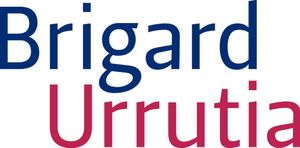Purchase-price adjustments in deals involving Latin American targets

This is an Insight article, written by a selected partner as part of Latin Lawyer's co-published content. Read more on Insight
Resolving pricing discrepancies is a cornerstone of any M&A transaction, regardless of the complexity of the deal. Under Colombian law, purchase agreements require consent between the parties on the property being sold and its price; however, when a business is being transferred by means of a share or asset transfer, the valuation of the underlying company, and therefore its pricing, becomes a much more challenging exercise.
Participants struggle with valuation discrepancies in several ways throughout the bidding process when pursuing M&A deals. From hiring investment banks, accounting firms and law firms to map out the business, its performance and risks to presenting a non-binding offer, buyers are constantly dipping their toes in what will result in a final price offer; on the other hand, sellers are strategically and progressively revealing information to maximise their return and gauge the interested parties. As the deal progresses from auction drafts to drawn-up and negotiated contracts, and as information about the target becomes clearer, pricing becomes more precise; however, it is unlikely to be an absolute valuation.
Determining a final price is challenging because of three primary issues: fluctuations in the company’s performance between signing and closing, the unpredictability of business outcomes owing to market externalities and potential losses emerging after closing from unidentified, undisclosed or unknown contingencies. Changes in the target’s value between signing and closing are generally addressed by price adjustment mechanisms unless the matter is so grave that an exit owing to material adverse effect is warranted; on the other hand, outcomes arising from external market conditions are handled through contingent price adjustments, and unforeseen losses are typically covered by indemnity packages. It is at this moment that seasoned M&A lawyers take the lead and contractually regulate the differences among the parties.
This chapter focuses on contractual remedies for mitigating valuation differences. It first discusses pricing mechanism adjustments between signing and closing, primarily focusing on closing accounts adjustments, particularly levels of working capital (WC) and net-debt (ND), and locked-box (LB) adjustments. It then discusses contingent and conditional price increases, with a spotlight on earn-outs in private deals.
Price adjustments: the art of taking pictures of moving targets
Businesses operate like machines in perpetual motion, and regardless of the time and effort spent, or the commercial records and history that can be accessed, the elements used to set the price fluctuate until closing: inventory, accounts receivable, cash and debt, among other things, continue to rise and fall, which means the price agreed at signing may differ at closing.
Knowledgeable parties try to minimise surprises and avoid unforeseen increases or decreases of the purchase price. Pricing adjustments protect the parties from two-way variations (upwards or downwards) in financial conditions from signing to closing. By anticipating potential changes, lawyers add value to their clients by effectively managing and regulating these variations.
The best way to mitigate fluctuation risks is to complete the signing and closing simultaneously or limit the time between these two milestones; however, simultaneous signing and closing is more the exception than the rule. Parties generally need time to fulfil certain conditions, such as obtaining merger control and third-party waivers, terminating related-party transactions and securing financing. This means price adjustment clauses are a must-have for M&A transactions.
Even if purchase-price rules are written and negotiated by lawyers, determining the appropriate adjusting regulations requires close collaboration with the financial advisers, the accountants and the parties. Understanding the type of business, its particularities and its cycles is essential when pairing the right set of adjustment mechanics and covenants. This ensures an appropriate conduction of the business between signing and closing and helps achieve an optimal pricing arrangement.
For example, Colombian florists incur increases in WC in the first quarter of the year when preparing for Valentine’s Day in February and Mother’s Day in May. Imagine a deal to buy such a business was finalised in October and closed in January. Essentially, the buyer would receive a business ready for its biggest selling season, with expenses and debt incurred by the target and lack of cash when received by the seller. In this case, the price would likely be adjusted to reflect the increased inventory but also the increased debt to achieve a more equitable solution. On the other hand, if closing occurred in June and earnings were distributed, the competitiveness of the business could be affected if the investments necessary for its operations are not accounted.[2] In these cases, a minimum level of cash and WC must be the premise to receive the business and the variable against which a price adjustment is measured.
Businesses with more consistent and unchanging financial indicators enable more accurate valuations and projections, which aid in defining pricing structures and require a different set of rules to adjust the consideration. For example, a toll road or a photovoltaic plant already under operation, where concession tariffs or power-purchase agreements have been secured, generally have more predictable cash flows.
Target specific particularities must be considered when selecting mechanisms to adjust the purchase price and deciding how to effectively protect and enhance the parties’ positions. The Latin American practice, perhaps because of its more volatile markets and common practice of using US-style M&A agreements, generally opts for price adjustments based on the closing accounts mechanism, while LB adjustments based on historical performance are more closely associated with deals in the European Union and the United Kingdom.[3]
Closing accounts adjustments
Closing accounts mechanisms are generally implemented to adjust the price to reflect the WC and ND position of the target as of the closing.
What are WC and ND and what is their purpose?
WC is a measure of the target’s liquidity and capacity to perform without needing additional equity or debt. It is calculated by subtracting liabilities from assets. Including a reference WC in the agreement ensures that the buyer receives a business with enough money to honour its commitments in the ordinary course of business, in accordance with historic performance. It also prevents sellers from extracting all the company’s cash or from using that cash to pay down debt, which could artificially increase the price before closing.
ND measures the capacity of the target to pay its debt if all the debt becomes due. It is calculated by deducting cash and cash equivalents from debt.
From a risk perspective, under a closing accounts adjustment, the risk of financial performance of the business is transferred to the buyer as of closing, while during the interim period between signing and closing, the seller remains responsible for maintaining the reference WC and the reference ND, and the price could be affected by changes, even those beyond seller’s control. The upside of the business could also, however, benefit the seller during that period.
How are WC and ND determined?
Although parties are free to define WC and ND, they often refer to recognised accounting principles (such as those of the International Financial Reporting Standards). It is generally understood that the assets of the company include cash and accounts receivable while liabilities are accounts payable. In this context, information about cash flows, debtors and creditors is relevant for assessing the value placed on the business.
Regarding WC, depending on the principles or definitions used, debt and fixed assets may not be considered current assets or liabilities, but interest on debt or payments related to those assets are included. Maturity dates identified in credit or leasing agreements during the due diligence review, therefore, become significant in determining what constitutes WC.[4]
Closing accounts adjustments can be one-way or two-way, meaning the price mechanism can either increase or decrease, or both increase and decrease the final purchase consideration. The metrics used for adjusting the price can vary depending on the type of deal. For example, inventory adjustments may be more relevant when acquiring assets rather than shares, while metrics like monthly users or advertising revenues may be more relevant when acquiring a website.
How does the adjustment for closing accounts work?
When using closing accounts, parties usually set a reference WC and a reference ND based on the historical operations of the business, the valuation of the business and the financial statements used for that valuation. The WC and ND are in turn recalculated at closing. If the closing WC is higher than the reference WC, then the buyer will increase the purchase price on a dollar-for-dollar basis, while a lower WC will result in a price deduction and the obligation to reimburse what was paid in excess. The same process applies for the differences between the reference ND and the closing ND.
Other similar adjustments include tax or debt adjustments. On the tax side, sellers are generally liable for taxes up until closing, effectively excluding taxes from WC definitions. In turn, unpaid taxes are discounted from the buyer’s consideration.
Another closing adjustment is a debt-free or cash-free provision. This arrangement operates under the assumption that the company will be either debt-free or cash-free at closing. If debt remains at closing, a price deduction is applied; conversely, if cash is still available, the buyer increases the purchase price.
What elements must be considered when drafting an adjustment for closing accounts?
First, there must be a definition of the accounts that will be used for the adjustments (e.g., WC and ND) and the reference amount of these accounts, along with a formula or set of rules to compare the reference accounts and the closing accounts to determine whether the adjustment to the purchase price is necessary. Defining a reference WC and a reference ND is a task for the financial advisers and an item negotiated by the parties; however, once the reference amounts are agreed, the lawyers must take all elements of the formula and incorporate them in the agreement, ensuring the same criteria will be considered when calculating the closing accounts.
At this point, the financial definitions play a paramount role in the mechanism. It is advisable to take the accounting definitions as a starting point; however, it is important to make sure that these definitions are reviewed by the financial team and to include a schedule detailing the accounts considered to adjust the purchase price or even an example of the calculation.
Second, this being a contractual matter, without applicable default rules in Colombia, it is advisable to include a detailed clause covering matters such as the time frame within which to prepare the accounts that will be used for the purchase-price adjustment, the supporting information necessary in the notice sent by the party responsible for calculating the adjustment, the response period, the right to access the information used for the calculation and a mechanism to solve the disputes if the parties cannot reach an agreement. [5]
Third, parties face the challenge of establishing the rules to determine the adjustment and the payment mechanics. These clauses can, and in some cases do, include thresholds, or even target ceilings or floors that may impact the buyer’s obligation to increase the price and the seller’s risk of receiving less compensation.
Regarding payment mechanics, the agreement should at least include a term to pay the additional price or reimburse any excess payments; however, depending on the type of deal and the creditworthiness of the parties, the inclusion of guarantees or mechanisms to secure the payment or reimbursement of the adjustment may be required. In some cases, reclaiming part of a prepaid price can be burdensome and time-consuming. As a result, buyers may request to withhold part of the purchase price until the adjustment of the purchase price is finalised, limiting involvement of third parties (e.g., escrow agents). If the seller has similar concerns about payments not made at closing, then an escrow, pledges or similar payment guarantees may be negotiated.
Fourth, legal advisers must ensure that the purchase agreement does not create scenarios for double indemnities. For example, if taxes accrued but unpaid are considered in the calculation of the WC, and the buyer has a representation on the accuracy of tax records or compliance with tax law, there is a risk of double coverage for the same issue. Parties must be aware of this eventual overlap and carefully draft the agreement to clearly distinguish which elements fall under the indemnity provisions and which will be referenced only in the adjustment of the purchase price.
Finally, a comprehensive set of covenants governing the conduct of business between signing and closing must be covered. All financial valuations require several assumptions and, to avoid surprises when adjusting the purchase price, these assumptions should remain relevant at the time of closing. It is crucial to regulate the different sections of the purchase agreement, such as what is and is not considered as the ordinary course of business or ensuring the consistency of the ordinary course of business with past practices, as well as the inclusion of covenants for the interim period. This is especially important for the buyer considering that management remains under the seller’s control until the purchase is completed. The purpose of including these covenants is to ensure that the business is run in the ordinary course and is sufficiently funded at all times.
LB adjustments
When LB mechanics are agreed, the purchase price is determined based on financial statements prepared before closing, and the purchase price is only decreased based on value extraction (e.g., the distribution of dividends) and other leakages agreed by the parties. [6]
What is LB and what is its purpose?
Unlike closing accounts adjustments in LB scenarios, the price is determined based on the assets, liabilities, taxes, cash and debt known at signing with accounts prepared before signing. Certainty of financial valuations effectively turn LB deals into fixed-price arrangements. This implies that the risk of the performance of the business is transferred to the buyer at the LB date: if the business underperforms, the buyer still has to pay the fixed price, if the business overperforms, the seller will not receive any additional compensation.
In our experience, the use of LB adjustments is more limited, particularly considering the risk perceptions in the region, which makes price certainty a primary concern in Latin American transactions. Parties avoid the early assumption of the allocation of risk and prefer extended valuation periods and more certainty in the determination of the price; however, an increasing number of deals in Latin America opt for LB mechanisms compared with a decade ago.
How does the adjustment for LB works?
When agreeing an LB mechanism, parties agree on a purchase price based on the financial information available at the time of signing. Between signing and closing, any leakage incurred by the target is deducted in full from the purchase price. Leakages generally correspond to payments outside the ordinary course of business and payments to related parties, and also tend to include the distribution of dividends. If there are payments to related parties or specific suppliers, the parties may agree on a list of exemptions or permitted leakages that will not be deducted from the purchase price.
What elements must be considered when drafting an adjustment for LB?
The risk here is that any unexpected changes could burden either the seller or the buyer. A dramatic change in the business may constitute a material adverse effect that allows the buyer to withdraw from the transaction. Conversely, a significant increase in unrecognised company value is a risk assumed by the seller in exchange for obtaining price assurance.
Sellers are not left unprotected: certain LB provisions introduce a ticking fee variable, where the price is increased periodically (either by the passage of time or by a set amount) between the LB date and closing. If a ticking fee is included, the detrimental changes to the business are borne by the buyer, while the risk of potentially not closing and regulatory hurdles are offset to the seller. The fee also incentivises the buyer to close sooner. [7]
The key to negotiating LB adjustments lies in determining what constitutes leakage from the LB and what does not, as this influences the final deductions from the purchase price at closing. [8] Since the seller operates the target, it is likely that most expenses outside the ordinary course of business will be considered leakage and discounted from the final purchase price. [9] On the contrary, operating costs are not featured under leakage provisions; however, the seller will push for permitted leakage, either by specifically identifying certain expenses (e.g., an unfavourable judicial ruling or administrative sanction) or by including a blanket coverage for out-of-pocket disbursements, such as distribution of dividends or payments made to related parties on an arm’s-length basis.
The definition of leakage must be supplemented by a strong definition of what constitutes the ordinary course of business and provisions for unforeseen payments. For example, in the case of unforeseen circumstances, the seller could grant the buyer access to information about the target while it is being handled or consult the buyer before taking certain actions or incurring in outlays.
Effectively balancing these two positions determines the success of the LB clause, which is why parties opting for LB arrangements place a greater emphasis on the accuracy of the financial information available at signing. This mechanism implies a higher emphasis on financial due diligence of the target; however, no matter how thorough and detailed the due diligence exercise is, unknown or undisclosed contingencies can later be addressed through an indemnity claim.
The recommendations relating to the drafting of the procedure to adjust the price, the clear differentiation of the matters that fall into the purchase-price adjustment and into the indemnity provisions, and the set of interim covenants described in the section about adjustments by closing accounts apply mutatis mutandis to the LB arrangements.
Contingent price adjustments: the art of closing valuation gaps
In addition to the strenuous valuation process of a company, other factors have further complicated the process of agreeing on targets’ valuations, including the covid-19 pandemic, political uncertainty, inflation and rising interest rates in the Latin American markets. Lack of clarity and continuity significantly affect business valuations, worsening the parties’ chances of converging on a consistent assessment. Resolving discrepancies in valuation estimates is crucial for achieving a successful acquisition. Against this backdrop, contingent price adjustments, such as earn-outs, have emerged as effective tools in bridging valuation gaps and getting the deal done.
Earn-out clauses address valuation uncertainties by linking a portion of the purchase price to the target’s future performance. [10] Specifically, they stipulate that a segment of the purchase price will be paid by the buyer post-closing, contingent on the target achieving predefined performance metrics or milestones. By incorporating future contingent payments based on criteria such as revenue targets, cash flows, resolution of pending issues, entry into a contract or obtainment of a government permit or authorisation, earn-outs provide an optimal way of aligning the parties’ expectations and settle valuation differences in complex transactions.
Types of earn-outs
Two distinct forms of earn-out clauses are typically employed. Performance earn-outs are commonplace in Latin American practice (whenever earn-outs are used) and are often based on the successful completion of specific activities or milestones. They might focus on achieving targets relating to product development, obtaining patents or securing contracts with key customers or permits from government entities, among other things. For example, in the pharmaceutical industry, an earn-out might be triggered upon the approval of a new drug for commercialisation. Similarly, in the construction industry, it could be linked to the renewal of a concession agreement.
The inclusion of economic earn-outs, which state that the seller will receive additional compensation based on the target’s profits over a specified period, are also common. Economic earn-outs are grounded in financial metrics such as EBITDA,[11] cash flow, pre-tax income, gross profit or net income. This mechanism is particularly valuable in sectors like start-ups or technology companies, where predicting future performance can be challenging because of the company’s early development.
Benefits of earn-outs
Incorporating earn-out provisions in an M&A deal offers significant benefits for both the buyer and the seller. The most apparent advantage is finding a middle ground in purchase-price expectations by facilitating a compromise to overcome any consideration-related impasses.
On the one hand, for a buyer, an earn-out presents several advantages. It can make their offer more appealing, particularly in competitive processes. By including an earn-out, buyers can lower the initial payment and shift the risk of achieving the additional purchase price to the seller, who is confident that the target’s future performance will meet the earn-out conditions. On the other hand, for the seller, earn-outs provide an opportunity to secure a higher overall value for the disposed business. This is increasingly beneficial during economic downturns or volatility, which have become the norm rather than the exception in Latin America, where buyers are cautious about overpaying. In sum, although the initial price might be lower, the possibility of receiving supplementary payments can increase the total sale value. [12]
Implementation risks and challenges
Drafting challenges
The effectiveness of an earn-out provision depends largely on its careful drafting, which can be a significant challenge for legal counsel. Outlining a well-defined earn-out provision requires precise articulation of the triggering events, payment terms and contingencies to ensure that both parties’ interests are adequately protected and aligned.
A major concern is that inadequately drafted earn-outs are likely to result in litigation, as ambiguities or omissions lead to disputes regarding whether the earn-out conditions have been met. The challenge for legal counsel is to leave as little room as possible for interpretation. Skilled lawyers use a combination of experience and anticipation of probable outcomes to define circumstances that may affect, cause or prevent the earn-out. This blend of expertise, industry knowledge and understanding of current events is key in designing effective post-closing adjustments.
Because earn-out clauses are based on future events, there is a risk that the targets and conditions may become outdated or unfit for ever-evolving circumstances; therefore, ensuring that the earn-out provision is comprehensive and adaptable to the target’s competitive landscape is critical to avoid conflicts. The challenge is to avoid the key drawback of earn-outs that often transforms a current dispute over price into a future dispute over results.[13]
Conflict of interest and perverse interest
Agreeing to an earn-out provision carries risks for both the buyer and the seller. In one respect, the seller, while retaining control of the company until closing, may be inclined to make short-term decisions to guarantee the fulfilment of the condition that triggers the earn-out, such as overspending on marketing to reach new customers. These decisions could jeopardise the long-term viability of the company and undermine the future performance of the business, ultimately affecting the value realised by buyer.
On the other hand, it may be the case that, once buyer acquires control of the company, it may have an interest in not satisfying the conditions that trigger the earn-out. The satisfaction of these conditions may be thwarted, for example, by not pursuing the necessary actions to enter into a specific agreement or to obtain a certain government approval, or by overspending or not investing in the company’s operations to meet an economic milestone.
In any case, these risks can be mitigated through the inclusion of covenants to prevent those risks. For instance, to manage seller’s actions during the interim period and buyer’s management post-closing, it is advisable to regulate the company’s operations according to past practices, effectively holding the new management accountable for prior actions or policies. Sellers, who also sometimes retain management or consulting roles, can access certain information of the target and can even spearhead existing litigation that may result in financial harm. Additionally, incorporating a covenant that mandates that the company be operated in a manner that maximises the likelihood and amount of the earn-out can further align parties’ interests.[14]
Finally, counsels must ensure that earn-out clauses are valid and enforceable under the applicable governing law. For example, under Colombian law, in order for a contract to exist, its purpose must be determined or determinable; therefore, an earn-out clause could be null and void if it is not possible to clearly determine the amount of the price to be paid to the seller. This is why defining constitutive elements of future expenditures is of the utmost importance.
While Colombian law allows conditional obligations, compliance with those obligations cannot be based solely on the individual will of the obliged party. This would result in a null and void provision. To honour this rule, the parties must ensure that the satisfaction of the condition triggering the earn-out is dependent on factors beyond the mere will of the buyer. This is why earn-out provisions rely on a combination of metrics rather than solely on the decision of an executive or corporate body.
Dispute resolution: the need to look at the worst-case scenario
In addition to the general discussion about the dispute resolution clause (e.g., the choice between judicial courts and arbitration, and between international arbitration and national arbitration), when there are purchase-price adjustments and contingent price provisions, there is another layer of discussion about who should decide the disputes about the calculation of the final purchase price. The first choice is to defer these disputes to independent experts rather than to judges or arbitrators because a judge or arbitrator is unlikely to be an expert in financial valuations, and legal proceedings are often lengthy and expensive. [15]
Both these issues can be easily resolved by appointing an independent third party, preferably an accounting expert, to resolve the disagreements independently of the dispute resolution clause. This mechanism aims to provide price certainty in the period following closing without requiring legal action. If a good faith agreement cannot be reached, the final decision is deferred to the independent third party.
This procedure should be entirely agreed in the contract without applicable default rules. For example, parties should agree in advance matters such as the list of independent experts and the rules that should be used to go through the list, the individual that can appoint the independent expert, the term granted to the independent expert to issue the decision, which party pays the fees, the rules to provide the independent expert access to the target’s information and whether the decision of the independent expert could go beyond the amounts calculated by the parties.
Finally, the clauses often establish whether the independent expert acts as an arbitrator. Even if it would be desirable to opt for the arbitrator option because it grants res judicata effect to the decision, this choice could be problematic because this clause should be interpreted along with applicable governing law related to arbitration; therefore, the safest harbour is to look at other mechanisms for alternative disputes resolution. For example, Colombian law permits the appointment of a third party known as an amicable compositeur, who does not have to be a lawyer, to resolve contractual disputes and issue a binding ruling, thereby avoiding further disputes over remedies presented by the parties. Unlike judges and arbitrators who have legal authority, this third party is empowered solely by the parties’ agreement and the terms outlined in it, allowing for significant freedom of contract in regulating their involvement. A sole remedy clause can be included in the agreement to exclude any judicial intervention. [16]
Conclusion
The purchase price is a key element in any purchase agreement. Regarding M&A transactions, the valuation of a business that is in continuous fluctuation is a major challenge. On one hand, purchase-price adjustment rules seek to address the changes of the business between signing and closing. Closing accounts and LB adjustments address the same concern but differ on the moment at which the risk shifts from the seller to the buyer. On the other hand, contingent price adjustments help to bridge valuation gaps by stipulating that a portion of the purchase price will be paid by the buyer post-closing, contingent on the target achieving predefined performance metrics or milestones.
In both mechanisms, purchase-price adjustments and contingent price adjustments, the key is to draft and negotiate the clauses so they are as clear and as detailed as possible because no default rules apply. These mechanisms are entirely deferred to the agreements among the parties; therefore, it is in their best interests to have procedures that can be deployed without the need of the parties’ consent, including the need to defer the determination of the price or the contingent price to an independent third party.
Endnotes
[1] Jaime Robledo Vásquez is partner, Ángela García Páez director, and María Acelas Celis and Santiago Negret Garrido are associates, at Brigard Urrutia.
[2] Lou R Kling, Eileen Nugent and Brandon Van Dyke, Negotiated Acquisitions of Companies, Subsidiaries and Divisions (Law Journal Press, 1992).
[3] Wachtell, Lipton, Rosen & Katz, ‘Takeover Law and Practice’ (2024), www.wlrk.com/wp-content/uploads/2024 /04/Takeover-Law-and-Practice-2024.pdf (accessed 30 Aug. 2024).
[4] Christopher S Harrison, Make the Deal: Negotiating Mergers and Acquisitions (Wiley, 2016).
[5] Patrick A Gaughan, Mergers, Acquisitions, and Corporate Restructurings (7th edn, Wiley, 2017).
[6] Reid Feldman, ‘Recent Trends in European SPAs and Comparisons with US Practice’, Business Law International, Vol. 17, No. 3 (2016), https://papers.ssrn.com/sol3/papers.cfm?abstract_id=3136234 (accessed 30 Aug. 2024).
[7] ‘To Lock or Not to Lock: An Introduction to the Locked Box Closing Mechanism’, PricewaterhouseCoopers (2014).
[8] Adam Tsao, ‘Pricing Mechanisms in Mergers and Acquisitions: Thinking Inside the Box’, University of Pennsylvania Journal of Business Law, Vol. 18, No. 4 (2016), https://scholarship.law.upenn.edu/jbl/vol18/iss4/7 (accessed 30 Aug. 2024).
[9] Kenneth Adams, Structure of M&A Contracts (LegalWorks, 2016).
[10] Ian Smith, Financial Techniques for Business Acquisitions and Disposals (Thorogood Publishing, 1998).
[11] Earnings before interest, taxes, depreciation and amortisation.
[12] ‘Earn-Out Clause’, LexisNexis, www.advance.lexis.com/open/document/openwebdocview/Earn-Out-Clause (accessed 30 Aug. 2024).
[13] Airborne Health v. Squid Soap, 984 A.2d 126 (Del. Ch. 2009).
[14] Lawrence Goodman, ‘Earn-Out Provisions in M&A Purchase Agreements’ (2017), www.nysba.org/Sections /International/Events/2017/Corporate_Wedding_Bells_Cross-Border_Mergers_and_Acquisitions/Coursebook /Panel_4/Lawrence_Goodman_presentation.html (accessed 30 Aug. 2024).
[15] Ulyana Bardyn, et al., ‘Resolution of Purchase Price Disputes in M&A Transactions’, in Amy Kläsener (ed), The Guide to M&A Arbitration (5th edn, Global Arbitration Review, 2024), www.globalarbitrationreview.com/guide/the-guide-ma-arbitration/5th-edition/article/resolution-of-purchase-price-disputes-in-ma-transactions (accessed 30 Aug. 2024).
[16] Committee on International Commercial Disputes, ‘Purchase Price Adjustment Clauses And Expert Determinations: Legal Issues, Practical Problems And Suggested Improvements’, New York City Bar (June 2013), www.nycbar.org/reports/purchase-price-adjustment-clauses-and-expert-determinations-legal-issues-practical-problems-and-suggested-improvements (accessed 30 Aug. 2024).











